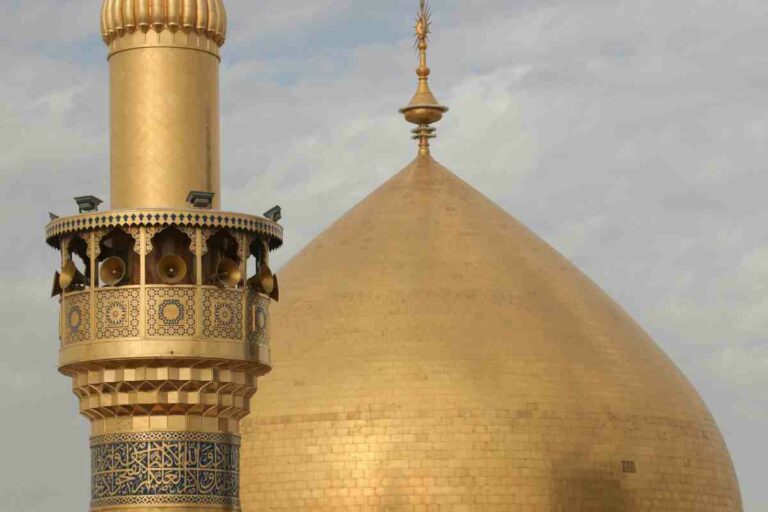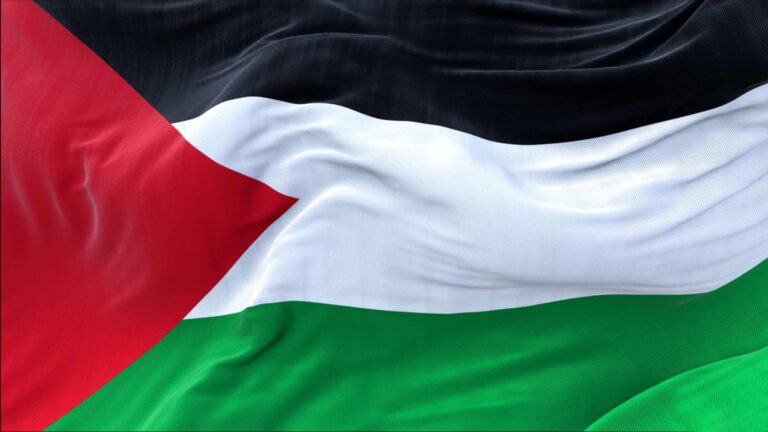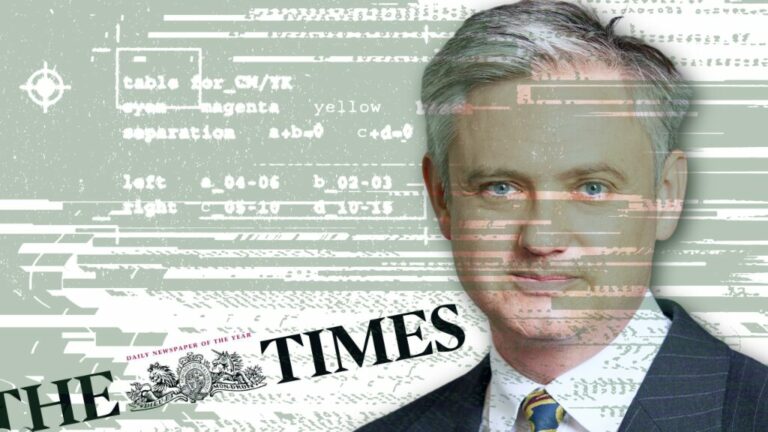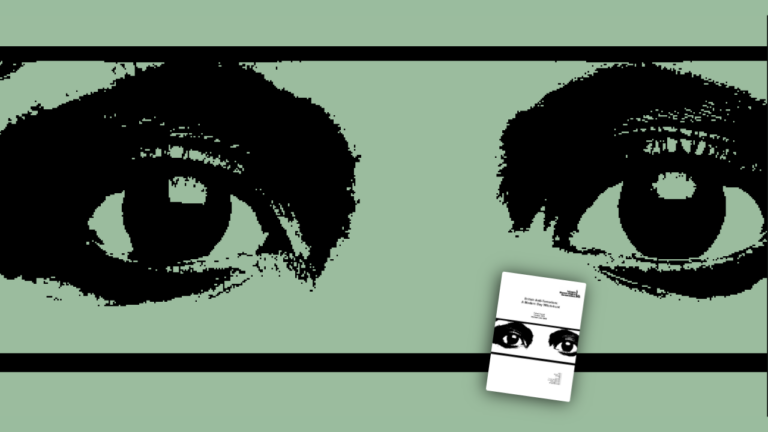———————————————————
Islamic Human Rights Commission
———————————————————
16th June 2004
Briefing: War Crimes and Accountability: A Historical Analysis
A historical analysis of accountability for war crimes in light of the recent revelations of widespread and systematic torture being committed by US troops in Iraq, Afghanistan and Guantanamo Bay.
1. Introduction
2. Algeria
3. Vietnam
4. Northern Ireland
5. Lebanon
6. Importance of Accountability
7. Conclusion
1. Introduction
The much-celebrated Nuremburg judgment of 1945 in which Nazi leaders were convicted of genocide, crimes against humanity, war crimes, and crimes against peace, was supposed to usher in a new era in which leaders would be held accountable for the crimes of their subordinates. Offences, such as those committed by the Nazis, were so heinous that even those who knew of the atrocities were to be held accountable, despite not being directly involved in them. The war crimes recently committed by US occupation forces in Iraq, notably the massacres of civilians in Falluja and the torture of detainees held in Abu Ghraib prison, has once again raised the question of military accountability. Ultimately, who is to be held responsible? Does accountability end with the direct perpetrators of the acts, their immediate superiors or does it terminate with the commander in chief in the White House?
A brief review of similar in recent history indicates three things: firstly, that war crimes and crimes against humanity are frequently committed by invading occupying forces. Secondly, prosecutions for such atrocities are rare and sentences very lenient. Thirdly, accountability is restricted to those individuals directly involved in the atrocities. Those higher up the chain of command are rarely, if ever, brought to justice. If anything, their deeds raise them even higher up the chain.
2. Algeria
During the Algerian war of independence (1954-1962), France faced great difficulties subduing the growing insurrection. It rapidly declared a state of emergency and enacted a law granting the government special powers in Algeria.
Mopping up operations of those suspected of sympathising with the Algerian resistance were codenamed ‘Maintaining the Order’. Villages were burned to the ground; local farming populations were deported and put into concentration camps. Women were raped, burned and killed. Men were arrested and tortured. In the United Nations, France was systematically condemned and got support only from Apartheid South Africa and Israel.
The cease-fire signed in March 1962 was accompanied by a reciprocal amnesty agreed between the two parties. Following the cease-fire, crimes of war became referred to as ‘acts committed in the context of operations designed to maintain order in response to the Algerian insurrection’ and were balanced with ‘acts relating to the participation in the insurrection and aid to the FLN’. While the acts committed by participants in the insurrection and the FLN were brought to trial, resulting in the execution of close to two hundred men under the death penalty, the crimes committed by the French soldiers were covered by the amnesty even before being detailed, let alone judged.
In May 2001, a former French general who served in Algeria, Paul Aussaresses, wrote a book exposing the full extent of governmental complicity in the atrocities committed by the French against supporters of Algerian independence. In his book, ‘Services Spéciaux, Algérie 1955-1957’, Aussaresses alleges that torture was ‘tolerated, if not recommended’ by high French officials, including the late François Mitterrand, who had an ‘exact knowledge’ of his actions. Mitterrand was justice minister at the time. If Aussaresses\’ allegations are true, French government officials could be implicated for instituting policies in violation of Common Article 3 of the Geneva Conventions of 1949, which France ratified in 1951. Aussaresses also describes in detail his own participation in torturing prisoners to death and in extrajudicial executions of Algerian activists.
The acts would also appear to constitute crimes against humanity. As generally used in customary international law, crimes against humanity refer to specific acts of violence, such as murder, torture and forced disappearance, that are the product of persecution of an identifiable group of persons. Such crimes are considered non-derogable rules of international law, and as such are subject to universal jurisdiction; allow no immunity from prosecution or amnesty, even to heads of state; are not subject to statutes of limitation; and do not recognize ‘obedience to superior orders’ as a defence.
In November 2001, Aussaresses went on trial in Paris. Human rights groups wanted to prosecute him for war crimes, but that was impossible because of the amnesty. The Paris prosecutor\’s office also rejected a plea for a charge of crimes against humanity, which would have circumvented the amnesty laws. Instead they brought an action under a rarely invoked law that makes it a punishable offence to try to justify war crimes.
Speaking on the eve of his trial, Aussaresses was unrepentant and repeated his view that torture was an unfortunate necessity. ‘I would do it again today if it were against Bin Laden’, he said.
In January 2002, Aussaresses was convicted of trying to justify the use of torture during the Algerian war and fined €7,500. The maximum penalty for this offence is five years imprisonment and a €45,000 fine. General Aussaresses was stripped of his rank and the right to wear his military uniform, and lost other military honours. The justice minister, Francois Mitterand later went on to become France\’s longest-serving president in the 1980s and 1990s
On the 14th December, 2000, French president, Jacques Chirac, rejected calls for a formal apology over France\’s use of torture during the Algerian war of independence. Mr Chirac said he would do nothing to detract from the honour of those French soldiers who\’d fought in the conflict. He said it was important not to reopen old wounds and he urged both countries to continue along the path of reconciliation.
Yet in 1987, France sentenced Lyon’s Gestapo chief Klaus Barbie to life for torture and executions of Resistance fighters during World War II – the same crimes committed by Aussaresses. In 1999, France convicted and jailed a senior Vichy official, Maurice Papon, for crimes against humanity committed against Jews over half a century ago, condemned Turkey over the 1915 Armenian massacres and called for the trial of Chile\’s general Pinochet. This shows that there is no limit on the time within crimes against humanity can be tried.
3. Vietnam
The decade-long US military intervention in Vietnam killed over three million Vietnamese. Much of the countryside was laid waste through carpet-bombing, napalm and widespread use of chemical defoliants, and even a quarter century after the end of the war, the economic and ecological impact remain enormous.
During the war, the CIA ran a programme called Operation Phoenix. This consisted of a series of raids of villages targeting the Vietnamese political leadership in the South, under which anywhere from 20,000 to 70,000 supporters of the National Liberation Front-and their families-were massacred. The standing order for raids was to take no prisoners and to kill any Vietnamese who crossed paths with the US forces. Elderly men, women and children were all assumed to be legitimate targets in what were declared “free-fire” zones.
My Lai
On the 16th March, 1968, in the village of My Lai, a group of American soldiers, under the command of platoon leader Lt. William Calley Jr., killed over five hundred Vietnamese civilians, including women and children, most of them shot at point-blank range. A witness to the massacre turned them in.
Most of the enlisted men who committed war crimes were no longer members of the military, and thus immune from prosecution by court-martial. Decisions were made to prosecute a total of twenty-five officers and enlisted men. In the end, however, very few were tried, and only one, Calley, was convicted. The top officer charged, General Samuel Koster, who failed to report known civilian casualties and conducted a clearly inadequate investigation had the charges against him dropped and received only a letter of censure and reduction in rank. The battalion commander, a Lieutenant Colonel Henderson, had been killed in a helicopter crash after the events at My Lai occurred. The army used this as a “responsibility cut-out” and stopped at that level.
Calley’s commanding officer, Captain Ernest Medina faced charges of murdering over one hundred Vietnamese civilians. The charges were based on the prosecution\’s theory of command responsibility: If Medina knew that a massacre was taking place and did nothing to stop it, he should be found guilty of murder. The jury acquitted Medina on all charges. (Months later, when a perjury prosecution was no longer possible, Medina admitted that he had suppressed evidence and lied to the brigade commander about the number of civilians killed.)
Calley was charged with the premeditated murder of several hundred civilians and ultimately found guilty of the premeditated murder of twenty two of the villagers. The jury sentenced him to life of hard labour. In the end, he only served only a few days before being placed under house arrest. His sentence was repeatedly reduced and he was ultimately pardoned by President Nixon. He was paroled in November 1974. Nixon\’s commutation, generally applauded by the political establishment, amounted to a public endorsement of mass murder.
Thanh Phong
In April 1999, former US Senator Robert Kerrey admitted participating in a death squad attack on the Vietnamese village of Thanh Phong in February 1969, in which he and six soldiers under his command killed twenty one women, children and elderly men, many at point-blank range. The confession came following the publication of an article by Gregory Vistica in the New York Times magazine. The issue was explored as well in the Sixty Minutes II program broadcast on CBS television in May that year. Vistica’s main source was a former SEAL and participant in the raid, Gerhard Klann.
Kerrey subsequently received a Bronze Star for his conduct in Thanh Phong and was recently appointed as the president of the New School University, one of the most prestigious positions in American academia. The New School is not simply any college, but one of the bastions of liberal and progressive thought in the United States. To place at its head a man charged with mass murder is particularly offensive.
While Kerrey may be guilty of a war crime, there are others who should stand in front of him in the dock-the surviving top US political and military officials responsible for the genocidal policies in Vietnam, from Henry Kissinger and General William Westmoreland to former CIA Director Richard Helms, and the numerous generals, diplomats, advisers and administrators who played essential roles in the war.
However, the exposure of Kerrey was greeted with an outpouring of sympathy from both Democratic and Republican politicians and the media. Even the New School University expressed their tremendous support for him. There is an extreme nervousness in the American political establishment over the reopening of old wounds. The entire ruling elite was implicated in the crimes of Vietnam and deeply discredited in the eyes of the American people. The war involved government duplicity and deceit on a monumental scale and countless illegal actions, at home as well as in Vietnam itself.
Kerrey was only a minor player in a vast array of official criminals who have never been brought to justice for their crimes in Vietnam. The US Secretary of State of the time, Henry Kissinger, whose responsibility for crimes against humanity extended far beyond Vietnam to include Cambodia, Chile, East Timor and Bangladesh, was awarded the Nobel Peace Prize in 1973.
4. Northern Ireland
In the early 1970s the British army used torture in Northern Ireland in response to the growing Republican movement and agitation for Catholic civil rights. Britain introduced internment without trial in the region in August 1971. Internment was designed to crush the Irish Republican Army. But the IRA was expecting it, and most of its operatives avoided the army\’s net. Hundreds of civilians were picked up and held in detention centres. Of the 342 original internees – all of them Catholics – less than a third had an IRA connection.
Internees were beaten with battens. Some were forced to walk over broken glass in their socks. Many were subjected to sensory deprivation techniques. The Compton official inquiry later acknowledged that the army hooded suspects, fed them on just bread and water and blasted them with noise. The report decided that \”in depth\” techniques did not contravene \”accepted British army procedures\”.
Ireland subsequently took Britain to the European Court of Human Rights, where it was eventually found guilty in 1978 of “inhuman and degrading treatment\’\’ of fourteen of the so-called Hooded Men (i). But the torture continued for nearly 30 years. The Castlereagh detention centre was particularly notorious. In 1994 the European Committee for the Prevention of Torture and Inhumane or Degrading Treatment or Punishment called for immediate improvements at Castlereagh. In July 1995 the UN Human Rights Committee recommended it should be closed \”as a matter of urgency\”. It was not closed until 1999
In the early 1980s the British government was accused of complicity in political killings of IRA activists. After much public protest, in May 1984 a senior police officer, John Stalker, was asked to investigate the cover-ups. Stalker later alleged that he was obstructed from carrying out a full investigation and that he had discovered evidence of unlawful killings by police. He was removed from duty after being falsely accused of corruption and disciplinary offences. The inquiry was continued by another police officer. In 1988 the attorney general announced that Ulster police had ‘attempted or conspired to pervert the course of justice.’ However, because of ‘national security considerations’, no officer was prosecuted. The inquiry was finally completed by Scotland Yard commissioner, Sir John Stevens in 2003 after fourteen years of investigation. His report concluded that British military and police personnel helped Protestant paramilitaries kill Catholics in Northern Ireland during the Troubles.
Bloody Sunday
In another atrocity, on 30 January 1972, fourteen unarmed civilians were shot dead by British army soldiers during a civil rights march in Derry. A tribunal of inquiry was established in 1998 to investigate the killings. Thus far the picture is emerging that British troops did in fact fire indiscriminately into the crowd of unarmed peaceful protestors and were not initially fired upon by IRA activists as they claimed. The inquiry is due to report its complete findings in 2005.
5. Lebanon
In September 1982, in the refugee camps of Saabra and Shatila in Beirut, over 3000 unarmed individuals – women, men, children, and the elderly – were brutally tortured, raped and slaughtered by Lebanese militiamen allied with and supplied by the Israeli Defense Forces. At the time of the massacre, the IDF were in complete control of Beirut and under the command of Defence Minister Ariel Sharon. As Israel\’s top general at the time of the massacres, Sharon had command responsibility, according to the Geneva Conventions and international law, for anything that happened in Beirut. Israeli units controlled access to and from the camps while the massacre unfolded. The IDF allowed the Lebanese militia to enter the camps and then launched flares into the night skies to assist the killers in the slaughter. An official Israeli commission of inquiry, chaired by Yitzhak Kahan, president of Israel\’s Supreme Court, investigated the massacre. In February 1983 it found that Ariel Sharon, among other Israelis, had responsibility for the massacre, although it carefully sidestepped any accusation of direct involvement in the massacre and chose not to attempt to reconcile much of the contradictory testimony. However, the inquiry was not legally binding and lacked judicial force. To date, not a single person–Israeli or Lebanese–has stood trial for the war crimes and crimes against humanity committed in September 1982.
Sharon was also commander of the special commando unit 101 which massacred sixty-nine Palestinian civilians in the West Bank village of Qibya in October 1953. The U.S. Department of State issued a statement expressing its ‘deepest sympathy for the families of those who lost their lives’ in the Qibya attack as well as the conviction that those responsible ‘should be brought to account and that effective measures should be taken to prevent such incidents in the future.’
Ariel Sharon is the current Prime Minister of Israel.
6. Importance of Accountability
An argument often advanced by those reluctant to hold war criminals accountable is that such actions must not be judged by everyday moral standards because they took place in the context of war. People such as Calleys and Aussaresses were only carrying out a military mission and cannot be held responsible for the outcome. However this argument of “following orders” raised by the Nazis was expressly rejected as a defence by the courts at Nuremburg and cannot be seriously considered today.
Another argument advanced against bringing war criminals of the past to account is that the events took place a long time ago, that eyewitness accounts may differ, and it is best to let sleeping dogs lie. But these are crimes of such magnitude, and of such an historical dimension, that they remain burning issues even after the passing of a generation or even two. Nazi war criminals have been pursued for more than fifty years, and not only the top leaders, the architects of the Holocaust, but those who implemented it from day to day, the concentration camp guards and commanders of killing units-the William Calleys and Robert Kerreys of the time.
Former UN Secretary General Kurt Waldheim was subjected to an international boycott after it was revealed-after he had left the UN and served as president of Austria-that he had been an active Nazi officer in Yugoslavia during World War II, linked to terrible atrocities against the Serbian people. The United States joined in international sanctions against Austria at the time.
There are examples in America as well. In May 2001, a former KKK member, Thomas Blanton was sentenced to life imprisonment for the murder of four black schoolgirls in the 1963 Birmingham, Alabama church bombing. Moreover, as the successfully concluded trial of Blanton demonstrated, it is possible to mount a serious and effective prosecution of a monstrous crime, even one nearly forty years old, given a shift in public attitudes. American public opinion, even among Southern whites, now regards the Ku Klux Klan atrocities of the 1960s with revulsion. The campaign in defence of Kerrey and others testifies, on the contrary, to an extraordinary official effort to legitimize the atrocities of US imperialism in Vietnam.
For complex ethical and geopolitical reasons, the Balkan wars of the 1990s created a new receptivity to the idea of criminal accountability, which led the UN Security Council to establish the International Criminal Tribunal for the former Yugoslavia. The ICTY has imposed lengthy sentences on many individuals guilty of the genocide which took place in Bosnia. However, many of the higher-ranking political and military leaders who ordered the atrocities remain at large. That said, former Yugoslavian president, Slobodan Milosevic is currently on trial at The Hague for crimes against humanity committed against the Kosovo Albanian population in 1998-1999 and the genocide committed by Serb forces in Bosnia-Herzegovina in the mid-1990s.
In the aftermath of the 1994 genocide taking the lives of about 800,000-mostly Tutsi-Rwandans, a parallel tribunal for Rwanda was set up. Both tribunals were set up due to the unwillingness or inability of the national authorities concerned to bring to justice the perpetrators of the atrocities committed. In 2002, the International Criminal Court came into existence with jurisdiction to try those accused of ordering the commission of aggression, war crimes, crimes against humanity and genocide. The jurisdiction of the ICC is expansive in that it covers both crimes committed by nationals of States Parties as well as crimes committed on the territory of States Parties. Consequently, individuals may still be brought before the court even where their government has not ratified the ICC treaty. The ICC’s jurisdiction also extends to any atrocities committed either in peacetime or in wars of both an internal and international character.
From the Northern Ireland experience, many lessons can be learned. Official inquiries into massacres such as Bloody Sunday have numerous advantages. Firstly, they investigate the culpability of both military and civilian authorities in such crimes. Secondly, they establish whether certain governmental policies, orders or practices constituted or lead directly to the commission of war crimes or crimes against humanity by occupation forces. Thirdly, they examine whether all necessary steps have been taken in the interim to ensure that there can be no repetition of these practices, including intensive training on the requirements of humanitarian law and the establishment of a strict accountability system to ensure that those responsible for violations face discipline or punishment. Finally, appropriately punishing those responsible for the atrocities provides their victims with a sense of justice and prevents them seeking their own retribution.
7. Conclusion
Once again today, we see the same horror stories of torture, rape and assassination emerging from Iraq, Afghanistan and Guantanamo Bay by US Occupation forces. Despite evidence that such abuse is widespread and systematic and part of US official policy, it seems that once again, those higher up the chain-of-command will escape unpunished. Those who directly committed the acts are already receiving very lenient punishments. History shows us, this climate of impunity actively encourages even more abuses to be committed. As the old axiom goes, ‘those who fail to learn from history are doomed to repeat it.’
(i) Ireland v UK (1978) 2 EHRR 25
(ii) Department of State Bulletin, 26th October, 1953, p. 552
——————————————–
Islamic Human Rights Commission
PO Box 598
Wembley
HA9 7XH
United Kingdom
Telephone (+44) 20 8904 4222
Fax (+44) 20 8904 5183
Email: info@ihrc.org
Web: www.ihrc.org.uk






